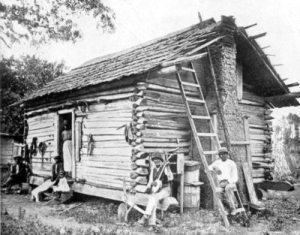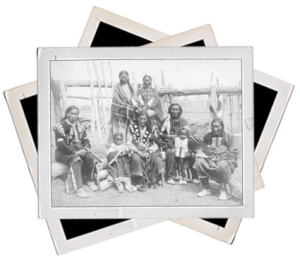Mississippi is located in the Southeastern part of the United States. The Gulf of Mexico borders it. It was explored by early Spanish explorers, but later became a French colony. Its fertile soil and warm weather attracted cotton growers. From the 1700s until the 1900s, cotton was Mississippi’s main industry.
Mississippi’s biggest city is Jackson, which is also its capital city. Jackson was founded in 1817, which was the same year that Mississippi gained its statehood, on December 10. The western border of the state is formed by the Mississippi River, which was also the source of the state’s name. The name “Mississippi” comes from an Algonquin word meaning “big river.” Many magnolia trees grow in Mississippi, which is why it has been given the nickname “Magnolia State.” The state flower of Mississippi is the magnolia blossom.
The earliest record of any explorers or settlers being in what is now Mississippi was in 1540. There is a written account of how the men of Hernando de Soto, a Spanish explorer, came to the area and located the Mississippi River. However, many Native Americans lived in the area long before that, taking advantage of the excellent soil and crop-growing environment. In its early years of statehood, there were more Native Americans living in Mississippi than in any other state in the southeastern part of the country. Those tribes included the Choctaw, Chicksaw, and Natchez.
There were four different jurisdictional periods in Mississippi’s history. They are:
- French Colonial (1699-1763)
- British Provincial (1763-79)
- Spanish Provincial (1779-98)
- American Territorial and Statehood (1798-present)
The French colonized Biloxi in 1699. That was the first Lower Mississippi Valley settlement. However, the colony was later relocated to Mobile. In 1716, Natchez became the governmental seat. In 1763, around the time that the French and Indian War ended, the province became the property of Great Britain. That led to several British Protestants immigrating to the area and living along with the French, who were Roman-Catholics. Then, in 1779, Spain regained control of the Natchez District from the British. The Spanish kept control of the region until it became part of the United States.
In 1798, Congress created Mississippi Territory. That territory included the land between the Mississippi River and the Chattahoochee River, south of Tennessee, as well as the lands from the 31st parallel north. There were two major settlements in the region at the time. One was located near the Tombigbee River in the eastern section of the territory. It was called the St. Stephens District. The other was called the Natchez District, and it was located near the Mississippi River, in the southern part of the territory. As of 1798, there were less than 5,000 white settlers in the region. The Creek, Chicksaw, and Choctaw tribes owned a lot of land in the area at the time, but the Gulf Coast was controlled by Spain.
The territory opened for settlement in 1798. County boundaries were soon formed and divided, as many settlers immigrated to the area. Researchers should note that the state of Alabama was also once part of Mississippi Territory. The following Alabama counties were originally Mississippi Territory counties: Washington, Madison, Baldwin, Clarke, Monroe, Mobile, Montgomery.
Aside from Mobile and Baldwin counties, there are counties in both Alabama and Mississippi that share the names above. From 1763 to 1779, British West Florida included the coastal part of Mississippi Territory. From 1779 to 1810, that same area was part of Spanish West Florida. In 1812 the land in Jackson, Hancock, and Harrison counties were incorporated into Mississippi. That occurred after the 1810 West Florida Revolution.
Land titles in Mississippi can be somewhat confusing, thanks to haphazard distribution practices after the 1783 Treaty of Paris and the 1795 Pinckney Treaty. Political issues also complicated matters. Early in its history, the white settlers took over lands that the Native Americans had previously owned. Goodspeed’s Biographical and Historical Memoirs of Mississippi explains the various treaties that led to the exchange of those lands.
There were so many settlers coming to the area that there was a push, in 1817, for Mississippi to be made a state. All of the land in what is now Mississippi was opened for settlement in 1832, after treaties were signed with the Chicksaw and Choctaw tribes. That brought several cultures together and eventually led to major cotton plantations being established in Mississippi. Both free African Americans and slaves helped to run the cotton plantations until the Civil War.
On January 9, 1861, Mississippi chose to secede from the United States. That led to Mississippi’s major Civil War involvement on the Confederate side. When the war ended, the reconstruction process was difficult. So, Mississippi’s stance on states’ rights was fueled by bitterness regarding the war.
White legislators enacted the Jim Crow laws, which kept even freed slaves impoverished, ignorant, and forced to serve white settlers, in many instances at least. Soon, thanks to sharecropping, cotton was again a major industry in Mississippi. Mississippi did not become industrialized until well into the 1900s. From 1940 onward, records show that the state was dramatically changed in economic, cultural, and political ways.
Mississippi Ethnic Group Research

Property that was owned by Confederates and later abandoned was also listed with the Freedman’s Bureau. If the property was restored through a presidential pardon or other means, that information is also listed there.
Federal censuses often included enumerations of slaves. That information can be useful to researchers. Slave schedules were recorded in 1850 and 1860. Later censuses included the names and races of each member of a given household. Probate, marriage, tax, and other county records may also have some information about African Americans. Names and ages of slaves may even be listed in certain records. Researchers may also find information on African Americans in cemetery and church records, as well as plantation journals and school census records. Newspapers can also hold valuable African American information.
A collection called the “Slave Impressments-Confederacy” also exists. It covers 1864 to 1865 and can be found at the National Archives. It lists slave owners, physical descriptions of slaves, slave values, and dates. The WPA has also created an ex-slave narrative project. The WPA interviewed freedmen across several states. The Mississippi Department of Archives and History holds copies of those interviews. The department’s manuscript collection also contains oral histories that the researchers may find useful. The state archives also holds the Alfred Stone Papers. That collection contains many published records of African Americans.
News footage from 1954 to 1971 can be found in the Newsfilm Collection. That collection includes documentation of Mississippi’s Civil Rights Movement. It chronicles the Capitol Street Boycott, as well as the Freedom Riders, demonstrations, lunch counter sit-ins, and the University of Mississippi enrollment of James Meredith, desegregating the schools. A large collection of materials relating to the Civil Rights Movement can be found near Jackson at the Coleman Library at Tougaloo College. Those records include some from the NAACP Legal Defense Fund, the Lawyers Constitutional Defense Committee, and the Lawyers Committee for Civil Rights Under Law.
The University of Mississippi Blues Archives holds a large collection of blues materials. There are recordings and biographies of musicians, as well as photographs, interviews, and posters.
- Mississippi African American Books (amazon.com)
- The Negro in Mississippi, 1865–1890 (amazon.com)
- African Americans: A Mississippi Sourcebook (amazon.com)
- The Black Press in Mississippi, 1865–1985: A Directory (amazon.com) With an intended historical purpose, this work directly renders a listing of newspapers, magazines, and newsletters printed by African Americans in Mississippi from 1865 to 1985.

Treaties can also provide genealogical information. A multi-reel collection of microfilm called the Papers of Panton, Leslie, and Company mention Native American matters from 1738 to 1853. It can be found at the archives.
- Mississippi Native American Books (amazon.com)
- Southeastern Indians, 185-96 For a good explanation of the structure of kinship (amazon.com)
- Indian Affairs: Laws and Treaties, 1779–1803, vol. 2 (amazon.com)
- Choctaw Mixed Bloods and the Advent of Renewal – A valuable source with listings of Choctaw names is found in the master’s thesis. A copy of the printed form or microfilm may be found at the Mississippi Department of Archives and History.
- The Choctaw: A Critical Bibliography (amazon.com)
- The Jena Choctaw: A Case Study in the Documentation of Indian Tribal Identity – National Genealogical Society Quarterly 75 (September 1987): 180-93
- The Removal of the Choctaw Indians (amazon.com)
Colonial Americans also recorded many documents relating to Native Americans. Some of those documents can be found at the Mississippi Department of Archives and History in the collection called Provincial Records. Most of those records were general references about how the colonists related to the Native Americans.
The Provincial Records are organized according to who ruled Mississippi at the time that the records were created. For example, the French Provincial Records cover 1678 to 1763. They can be found in Paris, France, at the Archives du Ministers du Colonies, Series C13a. The Fifth Annual Report of the Mississippi Department of Archives and History, 1905-06, 61-151 describes those documents. Mississippi Provincial Archives French Dominion, 1729-1748, 5 vols contains a translation of those records.
The English Provincial Records cover 1763 to 1783. They can be found in London at the British Public Records Office.
Spanish Provincial Records can be found in Spain in the cities of Madrid, Simancas, and Seville. However, microfilmed copies and transcripts of all colonial records are in a collection called Provincial Records at the Mississippi Department of Archives and History.
Pennsylvania History Databases and other Helpful Links
- History of Mississippi Wikipedia
- Territorial Papers of the United States: The Territory of Mississippi, vol. 6 (Washington, D.C.: Government Printing Office, 1938 by Clarence Edwin Carter).
- Encyclopedia of Mississippi history: comprising sketches of counties, towns, events, institutions and persons, Volume 2
State Genealogy Guides
[mapsvg id=”13028″]
